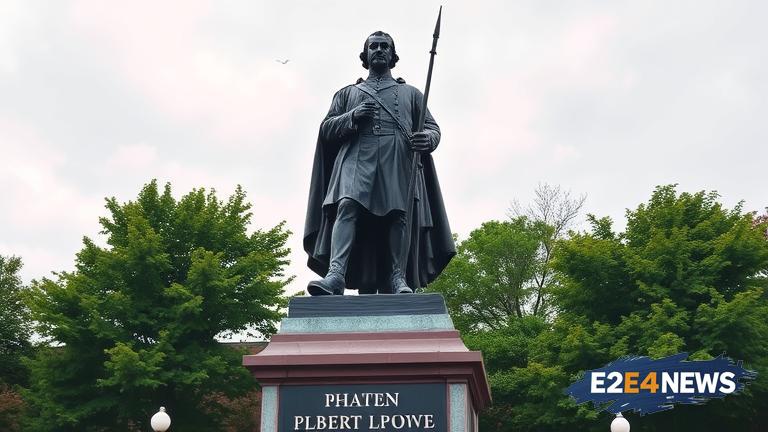The decision to reinstall the statue of Confederate General Albert Pike in Washington has ignited a heated debate among historians, politicians, and the general public. The statue, which was originally erected in 1901, was removed in 2020 due to concerns over its association with white supremacy and racism. However, a recent court ruling has paved the way for its reinstatement, citing the importance of preserving historical artifacts. Proponents of the statue’s reinstallation argue that it is a vital part of American history and that removing it would be an attempt to erase the past. On the other hand, opponents claim that the statue is a symbol of racism and oppression, and that its presence would be a reminder of the country’s dark history of slavery and segregation. The controversy surrounding the statue has sparked a wider discussion about the role of Confederate monuments in modern society. Many argue that these monuments serve as a reminder of the country’s troubled past and that they should be removed or relocated to a museum or historical site. Others believe that they are an important part of the country’s cultural heritage and that they should be preserved and protected. The reinstallation of the statue is expected to take place in the coming weeks, and it is likely to be met with protests and demonstrations from both sides of the debate. The issue has also sparked a conversation about the importance of historical context and the need to provide a nuanced understanding of the past. Some historians argue that the statue should be accompanied by a plaque or exhibit that provides context about the life and legacy of Albert Pike, as well as the historical period in which he lived. This, they argue, would help to provide a more balanced understanding of the statue’s significance and would allow visitors to make their own informed decisions about its meaning. Others, however, believe that the statue is inherently problematic and that no amount of context or explanation can justify its presence. The controversy surrounding the statue has also highlighted the ongoing struggle to reconcile the country’s past and present. Many Americans are still grappling with the legacy of slavery and segregation, and the debate over the statue has brought these issues to the forefront. As the country continues to grapple with issues of racism and inequality, the reinstallation of the statue is likely to be seen as a setback by many. The decision to reinstall the statue has also been criticized by many in the African American community, who see it as a symbol of the ongoing struggle for racial justice and equality. The NAACP and other civil rights organizations have spoken out against the decision, arguing that it is a step backwards for the country. The controversy surrounding the statue has also sparked a wider conversation about the role of art and monuments in shaping public discourse. Many argue that public art should be used to promote unity and understanding, rather than to perpetuate divisive ideologies. The reinstallation of the statue is likely to be seen as a test of the country’s commitment to these values. In conclusion, the decision to reinstall the statue of Confederate General Albert Pike in Washington is a complex and contentious issue that has sparked a heated debate among historians, politicians, and the general public. While some argue that the statue is a vital part of American history, others see it as a symbol of racism and oppression. As the country continues to grapple with issues of racism and inequality, the reinstallation of the statue is likely to be seen as a setback by many. The controversy surrounding the statue has highlighted the ongoing struggle to reconcile the country’s past and present, and it has sparked a wider conversation about the role of art and monuments in shaping public discourse.
